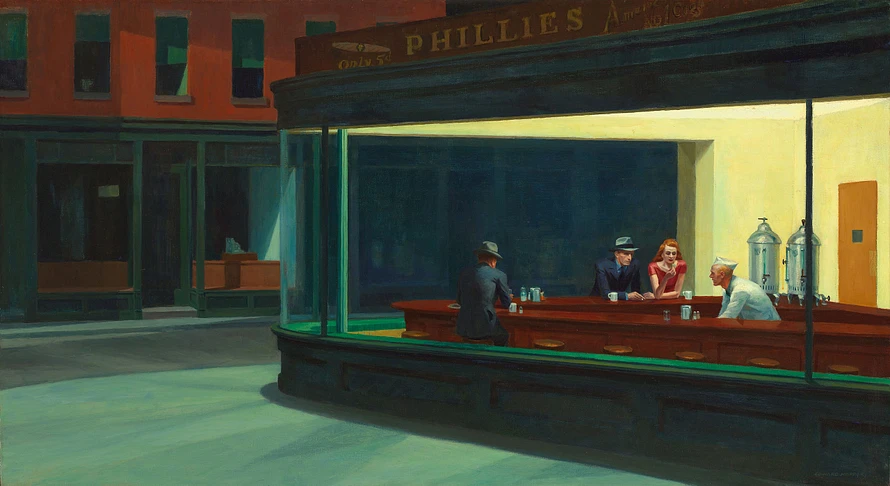Nighthawks by Edward Hopper: A Timeless Window into American Loneliness
Edward Hopper’s "Nighthawks" is one of the most iconic paintings in American art history. Created in 1942, this hauntingly atmospheric oil on canvas captures the quiet tension and solitude of urban life, frozen in time. For decades, Nighthawks has intrigued art lovers, critics, and casual viewers alike, earning its place among the most recognizable and analyzed works of modern art.
What is "Nighthawks" by Edward Hopper?
Nighthawks is a painting that portrays four figures—three customers and a diner attendant—inside a brightly lit late-night diner. The streets outside are empty, bathed in shadow, suggesting a city that never sleeps yet remains profoundly alone. Hopper’s precision and minimalist composition emphasize isolation even in shared spaces.
Location of the original painting:
The original Nighthawks painting is housed at the Art Institute of Chicago, where it continues to draw millions of visitors and art historians interested in American realism and 20th-century urban culture.
Themes in "Nighthawks": Loneliness and Modern Life
One of the most compelling aspects of Nighthawks is its ability to evoke complex emotions with minimal storytelling. The figures do not interact with each other. Their body language and the stark lighting convey a palpable sense of detachment. Hopper himself once admitted that Nighthawks was inspired by "a restaurant on Greenwich Avenue where two streets meet" but also by his subconscious impression of the "loneliness of a large city."
Key themes explored:
-
Urban isolation
-
Post-war anxiety
-
Alienation in modern society
-
Timelessness and stillness
This masterwork of American realism perfectly captures the emotional undercurrents of life during the 1940s—a time when the world stood on the brink of change.
Art Style and Technique
Edward Hopper was a leading figure in the American Realism movement. His style combined sharp architectural lines with moody light effects. In Nighthawks, the use of fluorescent lighting, a relatively new technology at the time, adds to the stark contrast between the warm interior and the cold, lifeless streets outside.
The glass windows in the diner stretch across the scene, creating a stage-like setting. This transparent barrier invites the viewer to become a silent observer—almost like a voyeur to a private, emotionally charged moment.
Why Is "Nighthawks" So Famous?
Beyond its aesthetic appeal, Nighthawks has become a cultural symbol. It has been referenced and parodied in everything from The Simpsons to Blade Runner, testifying to its influence on visual storytelling.
Searches for “Nighthawks by Edward Hopper meaning” or “Nighthawks painting analysis” have surged as new generations discover its relevance in an age of digital disconnection and urban overload. Its message feels as fresh today as it did over 80 years ago.
Conclusion: The Enduring Legacy of Hopper's "Nighthawks"
Whether you're a seasoned art collector or someone new to the world of fine art, Nighthawks offers a quiet but powerful meditation on the human condition. Edward Hopper's masterpiece is not just a painting—it is a mirror reflecting our innermost thoughts about solitude, time, and connection in a fast-paced world.
